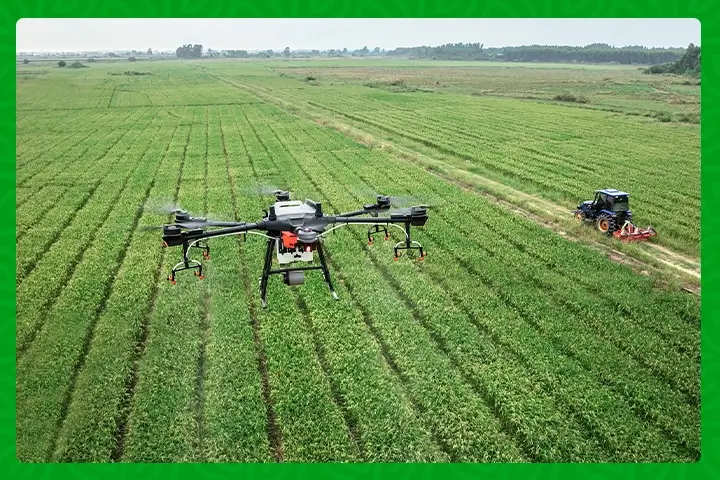

Christopher Burke
Managing Director, WMC Africa
Emerging digital and Geographic Information System (GIS) technologies have revolutionized a broad range of sectors. The application of these technologies to underwriting and insurance in agricultural development initiatives holds profound potential when combined with remote sensing data captured from a rapidly growing constellation of satellites and photography from crewed or unmanned aerial vehicles (UAVs). Underwriting in agricultural development involves the assessment of risks associated with lending to farmers, agribusinesses and related ventures. By leveraging emerging digital and GIS technologies, underwriters can enhance risk assessment, streamline processes and make more informed decisions fostering sustainable agricultural development.
Digital technologies enable the collection and analysis of vast amounts of data related to agriculture, including crop yields, weather patterns, soil health, market trends and historical performance. The Cadasta Foundation’s Land Administration Advisor Justus Wambayi Wabwire explained how GIS data can be integrated with satellite imagery, soil maps and land use patterns to provide underwriters with detailed insights into the risk factors associated with agricultural ventures. Advanced analytics tools empowered by artificial intelligence (AI) can then be utilized to process this data and more accurately assess the creditworthiness of borrowers.
Remote sensing and monitoring technologies are progressing at incredible rates. These technologies are increasingly accessible according to Frank Pichel, the partner for global operations at PLACE, a Washington DC based nonprofit that partners with governments to provide ultra-resolution aerial and street view imagery. As Frank notes, “Satellite imagery equipped with remote sensing technologies provide real-time monitoring of agricultural activities at a macro level, and can be supplemented by very high resolution aerial imagery to provide actionable insights at the local level.”
Underwriters can use this data to verify the information provided by borrowers including information on the extent of land under cultivation, crop health and compliance with agricultural best practices. By remotely assessing the condition of collateral assets, underwriters can mitigate risks associated with lending against agricultural land or equipment.
Climate change poses significant challenges to agricultural production, affecting crop yields, water availability and the prevalence of pests and disease. GIS technologies enable underwriters to map climate risk zones and assess the vulnerability of agricultural operations to extreme weather events, while increasingly available data allows for ongoing monitoring. As Stanbic Bank Uganda Insurance Manager Dogo Singh explained, financial institutions can incorporate climate risk metrics into underwriting models to better understand and manage their exposure to climate-related losses. In this way they are in a stronger position to tailor financial products such as weather-indexed insurance and flexible repayment schemes.
Blockchain technology combined with GIS data is incredibly secure states data manager Geoff Lavoy in Kampala, Uganda. This technology can be used to enhance supply chain traceability in agriculture, enabling underwriters to track the flow of agricultural products from farm to market. By verifying the provenance and quality of produce, underwriters can assess the reliability of revenue streams associated with agricultural loans. Transparent supply chains also reduce the risk of fraud and improve the resilience of agricultural value chains to disruptions.
Digital platforms can facilitate the development of customized risk mitigation solutions for agricultural stakeholders suggests FAO International Land Administration Specialist Miguel Sanjines currently based in Guyana. By aggregating data from multiple sources, including weather forecasts, market prices and agronomic advice, underwriters can offer risk management services tailored to the needs of individual farmers or agribusinesses. These solutions may include insurance products, hedging instruments, or advisory services aimed at improving productivity and profitability.
The application of emerging digital and GIS technologies holds immense promise for strengthening underwriting in agricultural development. Harnessing the power of data analytics, remote sensing, climate risk management, supply chain traceability and customized solutions substantially strengthens the real time capacity of financial institutions to assess and manage risks in agricultural lending thereby promoting sustainable growth and resilience in the agricultural sector.
END
Christopher Burke is the managing director of WMC Africa, a communications and advisory agency in Kampala, Uganda. He has almost 30 years’ experience working on a broad range of issues in social, political and economic development focused on agriculture, land governance, communications and peace-building based in Asia and Africa.
Stay updated with the latest farming tips and agriculture industry news from Africa by subscribing to our newsletter. Don’t miss out on valuable insights and updates. Follow us on Twitter, LinkedIn, and Facebook to join our farming community and stay connected with us.



















